let the objects speak
Early Panama - Conte Style Pedestal Base Bowl
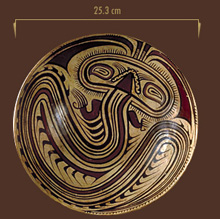
Until recently only a few regions of ancient Panama had received the attention of archaeologists, but now the art and archaeology of the country are widely and actively studied. Our understanding of Panamanian cultures is increasing daily as ancient artifacts such as this painted pedestal-base polychrome bowl are re-examined and described. The painting depicts a mythical shamanic creature in motion, a very strong theme in Tonosí and Conte ceramic art. The whiskered serpentine image with clawed appendages portrays the transformation of a shaman from reality to another dimension, possibly the underworld.
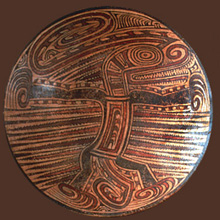
Who
Native religious practitioners in Panama ingested a wide variety of mind-altering plants to aid them in achieving states of transcendence. The vivid, surreal nature of the vessel's image could be associated with one's state of mind under the influence of such substances. Use of mind-altering substances was widespread in the ancient Americas.
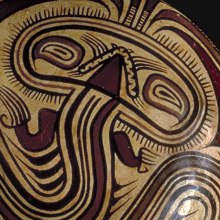
Although such practices are generally considered unlawful or inappropriate in modern Western society, they were not seen in that way centuries ago. We cannot judge the actions of ancient peoples based on current values and morals. The powerful drugs were essential components of their rituals and belief systems, and were regarded as vehicles for spiritual transformation.
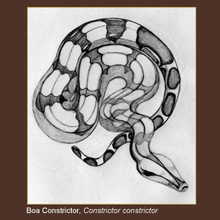
What
The eye markings and appendages suggest that the serpentine figure in this bowl is a hybrid image of a boa constrictor and an iguana, both native to Panama. Across Central and South America ancient cultures used images of snakes to express religious beliefs, myths, and shamanistic power and trance. The serpent remains a sacred image for many native peoples of the Americas today, as a cosmological symbol linked to creation and the duality of life and death, the upper and under worlds, and male and female. As a result the creatures are both feared and loved.
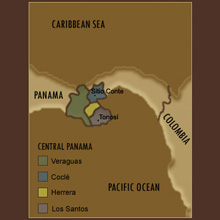
Where
Panama is rich in alluvial lands, and the river valleys outside of the Coclé province are where many ancient polychrome bowls similar to this piece have been found. Many museums across the globe have artifacts on display from the Tonosí Valley, which runs through the modern Panamanian provinces Los Santos, Herrera, and Veraguas. In ancient times these central provinces would have been the sites of intense competition for arable land, and for the narrow coastal strips necessary for subsistence farming and trade. In more recent times military control of the country has had an important effect on each province, and on the survival of indigenous peoples.